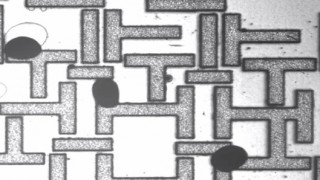
Water and computers tend not to mix very well, outside controlled watercooling loops. So it comes as somewhat of a surprise to learn that Stanford University researchers have devised an entirely new kind of computer processor that substitutes electrons for water drops.
The research team claims the new water-based computer is not designed to replace traditional computers. While the device is capable of carrying out logic operations, much like any normal computer, it’s more useful as a technology demonstration, showcasing novel ways of harnessing and controlling matter.
Stanford University’s assistant professor of bioengineering, Manu Prakash, argues that the basics of computing has always involved manipulation of information. “Computation and computers are bound by laws of physics, primarily because bits are physical entities. That notion implies that you can use computers to actually manipulate matter,” explained Prakash.
The computer is made up of a labyrinth of metal tunnels, positioned in such a way as to allow the research team to completely control the “magnetic landscape.” Ferrofluid droplets are placed inside the computer’s carefully configured maze - consisting of a vast array of T and I bars - and the magnetic fields, generated by external coils, triggers the water’s movement. The water’s direction and speed are altered by merely changing the afore-mentioned “landscape,” thereby allowing the researchers to perform different logic operations.
The droplets can serve as small “beakers” of information, in which chemical and biological materials can be stored. The magnetic fields can then dictate what direction the “information” is transmitted. Flipping the magnetic field’s direction changes the polarity of the bars. This affects the magnetic nanoparticles inside the ferrofluid and forces the water to change course.
The study, entitled Synchronous universal droplet logic and control, was published in the June 8 issue of the journal Nature.
